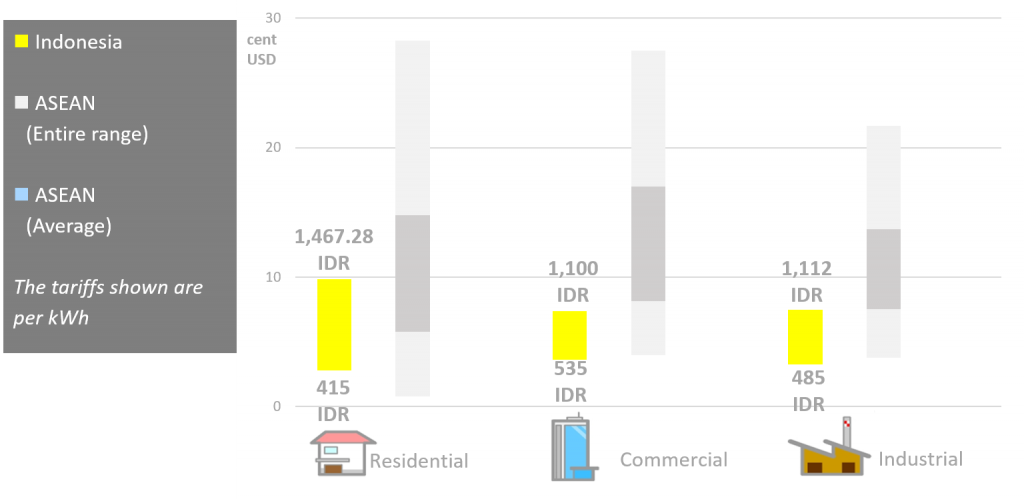There are several forces that shape the energy policies of Indonesia. Foremost, the security of energy supply is crucial for the nation. Indonesia used to be an important oil exporter and a member of the Organization for Petroleum Exporting Countries (OPEC). However, with the declining domestic production and booming demand, Indonesia became a net oil importer in 2004 and subsequently suspended its OPEC membership in December 2008. Even though six years later Indonesia re-activated its OPEC membership after the election of President Joko Widodo in 2014, the oil reserve is still seen to be insufficient to cover the growing demand. For this reason, the diversification of energy supply is necessary. Secondly, Indonesia has considerable renewable energy (RE) potential, which could be utilized in order to meet the increasing energy demand, but also to ensure environmental sustainability. As an archipelagic nation, providing reliable electricity supply to some part of the country is very challenging and decentralised RE power generation can be one of solutions. Indonesia announced its commitment to greenhouse gas (GHG) emission reduction during the G-20 Leaders’ summit and UNFCCC’s 21st Conference of the Parties (COP-21) in 2015, which is a GHG reduction by 29% in 2030. RE and energy conservation would have a vital role in fulfilling this pledge.
Indonesia’s energy sector is under the jurisdiction of Ministry of Energy and Mineral Resources (ESDM)[1]. The National Energy Council (DEN)[2], that was established in accordance to the Energy Law 2007 (UU No. 40/2007), is assigned to develop the National Energy Policy (KEN). Directorate General on New, Renewable Energy and Energy Conservation (EBTKE)[3] supports the DEN on the renewable energy and energy efficiency policies. The policy is implemented according to National Energy General Plan (RUEN).
The energy supply in Indonesia was highly subsidised by government. The fossil fuel subsidies are not new in Indonesia. These subsidies were introduced for the first time not long from the nation independence in 1949 and by the 1960s, the subsidies are accounted for nearly 20% of fiscal expenditure. The sharp devaluation of the currency during the Asian crisis of the late 1990s further ratcheted up their cost. By 2014, the economic value of fossil fuel subsidies in Indonesia amounted to $27.7 billion.
Indonesia however has been taking some actions by gradually removing fuel subsidies started in early 2015. The energy subsidies are given to the selected customers with specific regulations. This action has been successful in reducing the nation subsidies by significant amount. According to the IEA, the country expense on fossil fuel subsidies in 2016 was projected to less than 1% of GDP.
The energy policy in Indonesia has been defined in National Energy Plan 2014 (NEP14), that was signed on 17 October 2014 as Government Regulation No. 79/2014 to replace the 2006 National Energy Plan. NEP14 sets out the ambition to transform the country energy mix by 2025 as follow: 30% coal, 22% oil, 23% renewable resources and 25% natural gas.
[1] ESDM: Kementerian Energi dan Sumber Daya Mineral
[2] DEN: Dewan Energi Nasional
[3] EBTKE: Direktorat Jenderal Energi Baru, Terbarukan Dan Konservasi Energi
